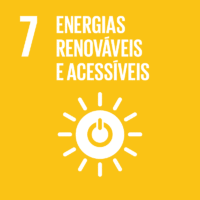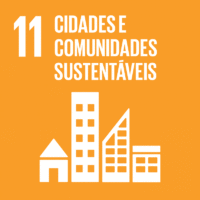Ciência_Iscte
Publicações
Descrição Detalhada da Publicação
Integrated computational approaches for energy retrofit of historical buildings in extreme climate environments
Título Revista
International Journal of Building Pathology and Adaptation
Ano (publicação definitiva)
2024
Língua
Inglês
País
Reino Unido
Mais Informação
Web of Science®
Scopus
Google Scholar
Abstract/Resumo
Purpose
The purpose of this research is to test the effectiveness of integrating Grasshopper 3D and measuring attractiveness by a categorical based evaluation technique (M-MACBETH) for building energy simulation analysis within a virtual environment. Set of energy retrofitting solutions is evaluated against performance-based criteria (energy consumption, weight and carbon footprint), and considering the preservation of the cultural value of the building, its architectural and spatial configuration.
Design/methodology/approach
This research addresses the building energy performance analysis before and after the design of retrofitting solutions in extreme climate environments (2030–2100). The proposed model integrates data obtained from an advanced parametric tool (Grasshopper) and a multi-criteria decision analysis (M-MACBETH) to score different energy retrofitting solutions against energy consumption, weight, carbon footprint and impact on architectural configuration. The proposed model is tested for predicting the performance of a traditional timber-framed dwelling in a historic parish in Lisbon. The performance of distinct solutions is compared in digitally simulated climate conditions (design scenarios) considering different criteria weights.
Findings
This study shows the importance of conducting building energy simulation linking physical and digital environments and then, identifying a set of evaluation criteria in the analysed context. Architects, environmental engineers and urban planners should use computational environment in the development design phase to identify design solutions and compare their expected impact on the building configuration and performance-based behaviour.
Research limitations/implications
The unavailability of local weather data (EnergyPlus Weather File (EPW) file), the high time-resource effort, and the number/type of the energy retrofit measures tested in this research limit the scope of this study. In energy simulation procedures, the baseline generally covers a period of thirty, ten or five years. In this research, due to the fact that weather data is unavailable in the format required in the simulation process (.EPW file), the input data in the baseline is the average climatic data from EnergyPlus (2022). Additionally, this workflow is time-consuming due to the low interoperability of the software. Grasshopper requires a high-skilled analyst to obtain accurate results. To calculate the values for the energy consumption, i.e. the values of energy per day of simulation, all the values given per hour are manually summed. The values of weight are obtained by calculating the amount of material required (whose dimensions are provided by Grasshopper), while the amount of carbon footprint is calculated per kg of material. Then this set of data is introduced into M-MACBETH. Another relevant limitation is related to the techniques proposed for retrofitting this case study, all based on wood-fibre boards.
Practical implications
The proposed method for energy simulation and climate change adaptation can be applied to other historic buildings considering different evaluation criteria and context-based priorities.
Social implications
Context-based adaptation measures of the built environment are necessary for the coming years due to the projected extreme temperature changes following the 2015 Paris Agreement and the 2030 Agenda. Built environments include historical sites that represent irreplaceable cultural legacies and factors of the community's identity to be preserved over time.
Originality/value
This study shows the importance of conducting building energy simulation using physical and digital environments. Computational environment should be used during the development design phase by architects, engineers and urban planners to rank design solutions against a set of performance criteria and compare the expected impact on the building configuration and performance-based behaviour. This study integrates Grasshopper 3D and M-MACBETH.
Agradecimentos/Acknowledgements
--
Palavras-chave
Climate change adaption,Building energy retrofit,Parametric modelling tools,Historic built environment,Integrated computational tools
Classificação Fields of Science and Technology
- Engenharia Civil - Engenharia e Tecnologia
Registos de financiamentos
| Referência de financiamento | Entidade Financiadora |
|---|---|
| UIDB/04466/2020 | Fundação para a Ciência e a Tecnologia |
Projetos Relacionados
Esta publicação é um output do(s) seguinte(s) projeto(s):
Contribuições para os Objetivos do Desenvolvimento Sustentável das Nações Unidas
Com o objetivo de aumentar a investigação direcionada para o cumprimento dos Objetivos do Desenvolvimento Sustentável para 2030 das Nações Unidas, é disponibilizada no Ciência_Iscte a possibilidade de associação, quando aplicável, dos artigos científicos aos Objetivos do Desenvolvimento Sustentável. Estes são os Objetivos do Desenvolvimento Sustentável identificados pelo(s) autor(es) para esta publicação. Para uma informação detalhada dos Objetivos do Desenvolvimento Sustentável, clique aqui.

 English
English




